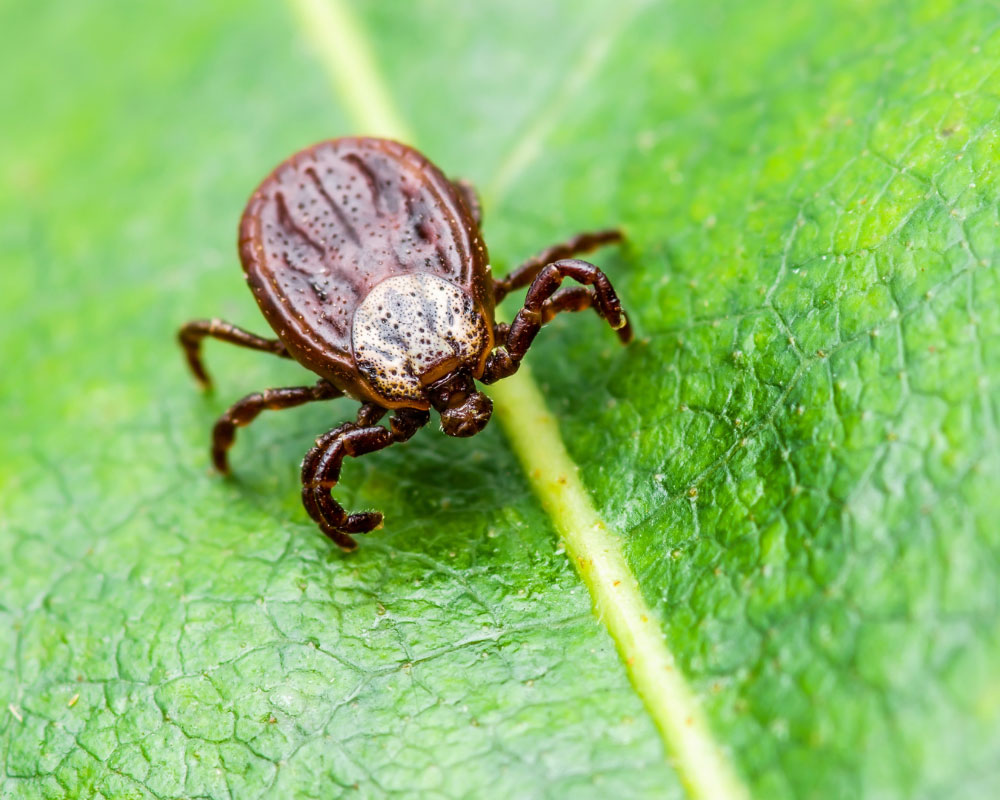
19 Jul Lyme Disease 101
Lyme disease is a tick-borne infection caused by caused by the bacterium Borrelia burgdorferi. This bacterium is sometimes referred to as “The Great Imitator” because it can imitate other conditions, such as:
- Alzheimer’s disease
- Multiple sclerosis
- Fibromyalgia
- Rheumatoid arthritis
- Chronic fatigue syndrome
- Schizophrenia
While Lyme disease can produce a wide-range of symptoms that may be difficult to diagnose, there are a few acute (immediate) symptoms to look for:
- fatigue
- fever
- flu-like symptoms
- and/or have a bullseye-shaped rash
More chronic signs and symptoms of Lyme disease (days to months after tick bite) include:
- Severe headaches and neck stiffness
- Additional rashes on other areas of the body
- Facial palsy (loss of muscle tone or droop on one or both sides of the face)
- Arthritis with severe joint pain and swelling, particularly the knees and other large joints.
- Intermittent pain in tendons, muscles, joints, and bones
- Heart palpitations or an irregular heart beat (Lyme carditis)
- Episodes of dizziness or shortness of breath
- Inflammation of the brain and spinal cord
- Nerve pain
- Shooting pains, numbness, or tingling in the hands or feet
How Does One Get Lyme Disease?
As mentioned above, Lyme disease is transmitted through deer ticks that are infected with Borrelia burgdorferi bacteria. When this type of tick bites you, it can inject this bacterium (and others) directly into your bloodstream.
Unluckily for us, Pennsylvania leads the nation in cases of Lyme disease. However, Lyme disease is present in many parts of the United States.
Ticks can attach themselves to any part of the human body. They are often found in hard-to-see areas such as the groin, armpits, and scalp. The good news is that, in most cases, the tick must be attached for 36 to 48 hours or more before the Lyme disease bacterium can be transmitted. This means that properly checking your body for ticks after time outdoors is essential.
How to Prevent Lyme Disease?
The biggest key to Lyme disease prevention is avoiding the ticks that carry this bacteria. The CDC notes that “most humans are infected through the bites of immature ticks called nymphs. Nymphs are tiny (less than 2 mm) and difficult to see; they feed during the spring and summer months. Adult ticks can also transmit Lyme disease bacteria, but they are much larger and are more likely to be discovered and removed before they have had time to transmit the bacteria.” (1)
There are some simple and effective ways you can prevent Lyme disease. During the summer months, especially, the following tips are essential for protecting you and your family.
Wear protective clothing outdoors:
Wearing pants and long sleeves is a great way to keep your skin from being exposed to tick bites. Wearing light-colored clothing is even better. This allows for you to easily see if a tick has made their way onto you.
You can also go a second step further by pretreating your clothing, boots, socks, and camping equipment with bug repellant. At Cavallo Health, we always prefer a less toxic option like 20% picaridin or 30% oil of lemon eucalyptus. Studies have found that these natural repellants worked better than DEET, which is a neurotoxin.
Wear a non-toxic tick repellent:
When it comes to insect repellents, choose a non-toxic option, such as: Tick Tock Naturals Organic Mosquito & Tick Repellent (which is on special this month!).
This DEET-free organic insect repellent is safe for everyone to use for bug bite prevention. The travel size is perfect on the go! Easy to carry on the plane, in your weekender bag, diaper bag or backpack.
Stay out of long grass or heavily wooded areas:
Ticks reside in the grass where they wait for their next meal. They can leap onto you pretty easily. So, the farther you stay from them, the better.
Walking in the middle of a hiking trail and avoiding trees, leaves, grass, and branches is a good way to keep these critters away.
Bathe or shower when you get home:
Bathing or showering within a few hours is a good way to check your body for ticks. Having a friend or family member help is even better. Ask them to examine areas that you might not be able to see well like your scalp and back. Washing and drying clothes on high for 30 minutes should kill any ticks that are attached to your clothing.
Check your best friends:
Yes, this means your besties but also your dogs! Dogs and even horses can carry the ticks that are infected with the bacterium Borrelia burgdorferi. Be sure to check your pets after hiking or camping in wooded areas and remove any ticks that you see right away
Testing & Treatment for Lyme disease
Lyme disease can be detected through a simple blood-test that can be drawn in-house at Cavallo Health. If you think you have been infected with Lyme, call us immediately.
Conventional treatment for Lyme disease and other co-infections is a round of antibiotics. This can sometimes include multpile antibiotics and antiparastic drugs. However, sometimes these drugs are not enough. This bacteria can have a profound impact on your immune system, producing debilitating symptoms.
There are many integrative, functional, and naturopathic treatments and ways to approach Lyme disease, including IV therapy and vitamin supplementation that not only work to kill the bacteria in your body but also to quell symptoms like fatigue, headaches, joint pain and more.
Focusing on supporting and strengthening the body’s innate immune system is pivotal when it comes to treating Lyme disease.
Leave a comment below if you have any questions about Lyme disease. Or, call us today to test for Lyme disease if you think you have been infected.
To book an appointment, fill out the form below or call us at:
New Holland Office: 717-351-0631
Quarryville Office: 717-806-5672





No Comments